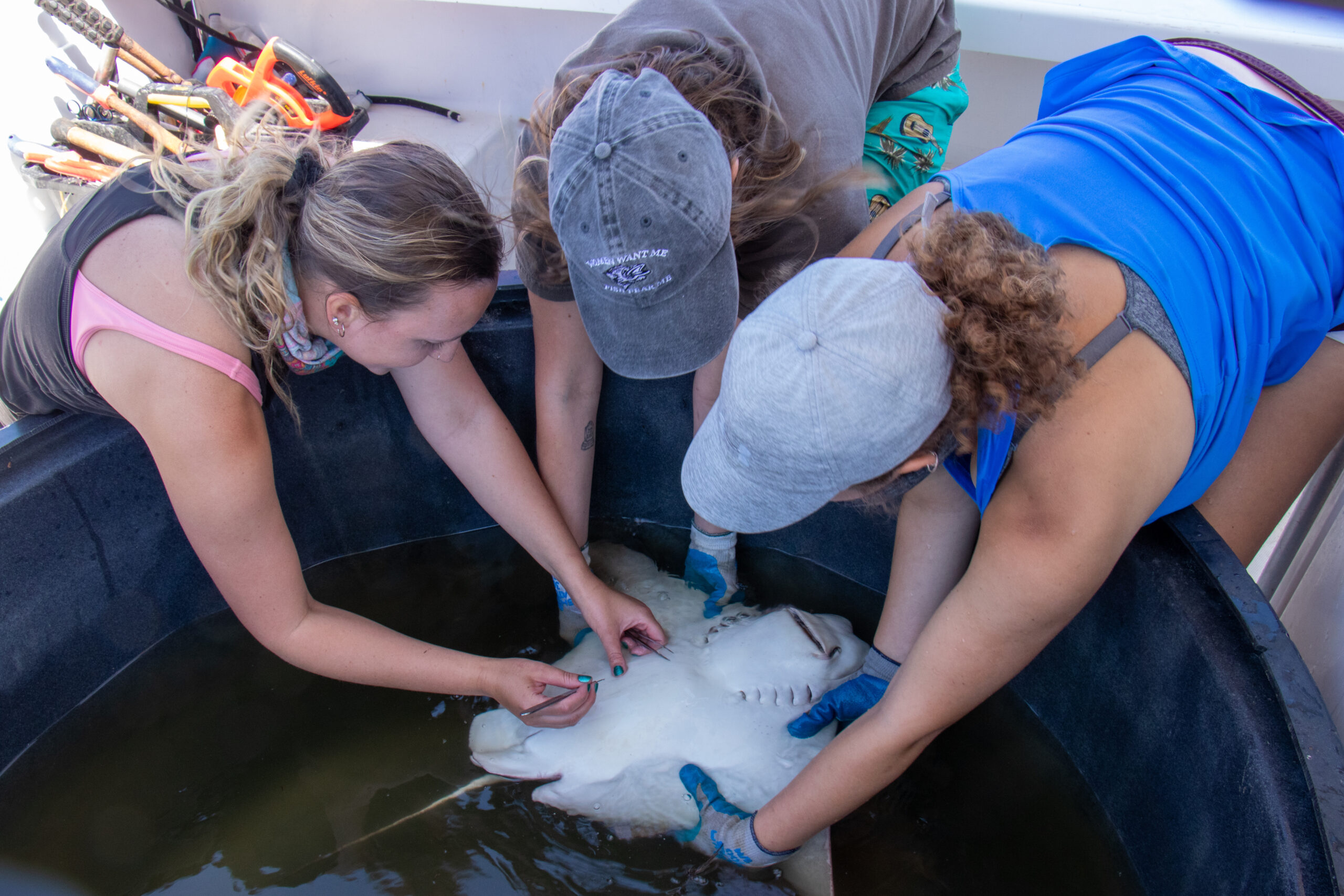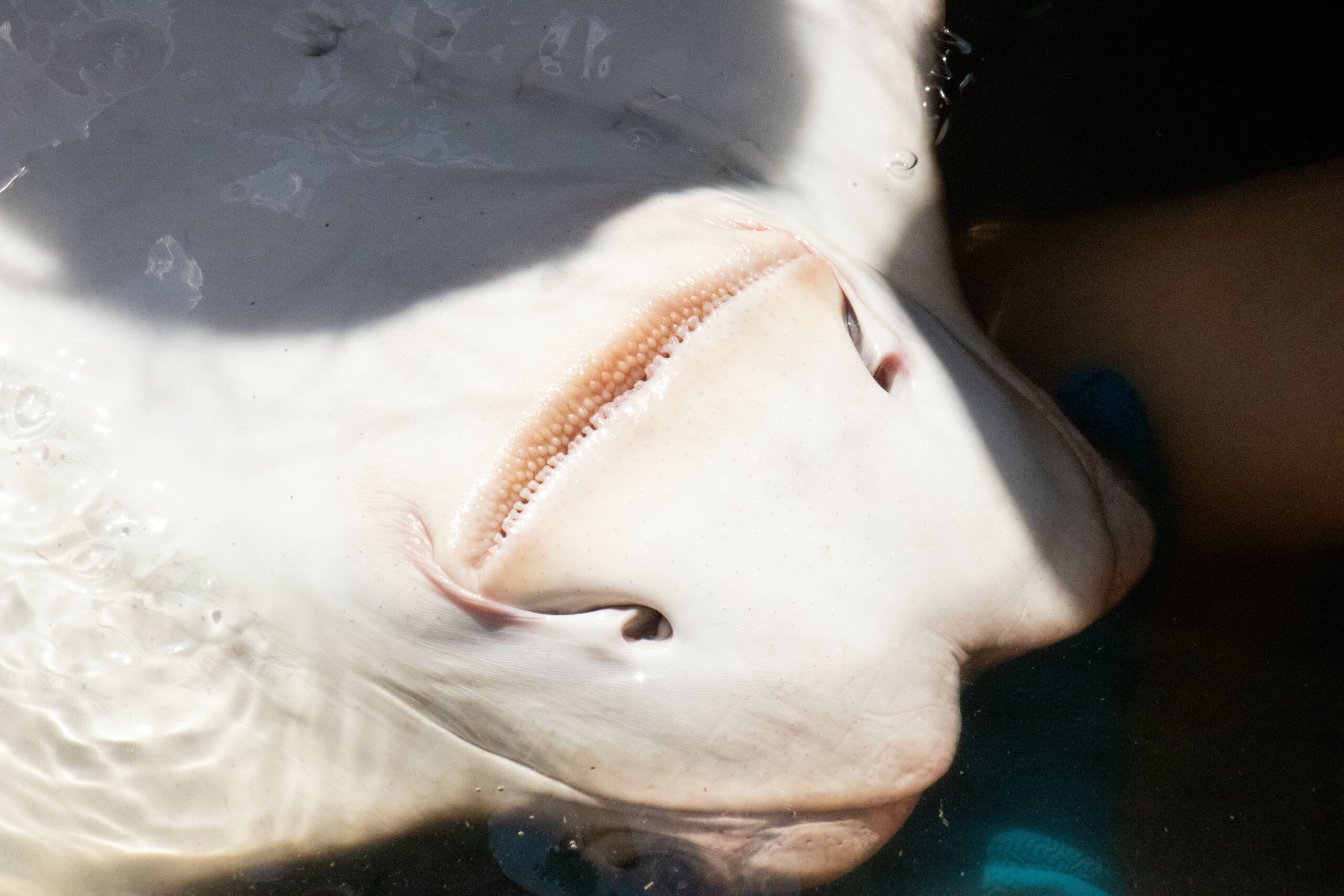Apalachicola Bay: an important ecosystem for Florida’s cownose rays?
In Summer 2021, our cownose ray movement behavior study was launched, with our team acoustically tagging 20 rays of various sexes and ages in Apalachicola Bay, FL. Our team set out for our big first day of sampling, excited but unsure of what to expect. Our prior records for cownose ray catch were spotty throughout the area, but by piecing together the limited data at my disposal, a starting sampling location was selected.
Within minutes of setting gear, I hear “there’s one!”, followed by “and another!” and then “they are everywhere!”. Tens to hundreds of cownose rays surrounded our vessel, with males closely following females near the surface, a clear sign of mating behavior (in addition to others). Our team was more than thrilled, and thus began our epic day of sampling and surgeries to implant acoustic transmitters.

Ashley Dawdy acoustically tagging an adult female cownose ray with the help of fellow graduate student Annais Bonilla-Johnson and undergraduate volunteer Hannah Watkins. © Brian Moe
Because of the area’s clear ecological importance to the species, I continued sampling this part of the bay during the same month each summer, and deployed 16 more acoustic tags during summer 2022, giving us a total of 36 tagged rays in the Apalachicola Bay system! We now have over a year’s worth of movement data from animals tagged in the first round of sampling. Our sampling data confirm that rays use the same part of the bay in consecutive summers for pupping and mating, though the timing of this aggregation appears to be variable. Further, acoustic data confirms that the same individuals are returning to the same area in consecutive summers during the mating and pupping season.

Ashley Dawdy releasing a pregnant female cownose ray after measuring and sampling. © Brian Moe
The results thus far have been incredibly exciting to follow! We have located a mating and pupping area for a species of conservation concern, important information regarding species life history that may be considered for future assessments or conservation issues. We are also learning much interesting information regarding behavioral trends at the individual level, with individuals exhibiting unique movement patterns throughout the system by sex and life stage. Genetic analysis has confirmed that all individuals sampled and tagged thus far in the Apalachicola Bay system are indeed Atlantic cownose rays (Rhinoptera bonasus) rather than their physically indistinguishable relative, the Brazilian cownose ray (Rhinoptera brasiliensis).

Close-up view of ventral surface (mouth) of an adult cownose ray. © Brian Moe
We are continuing to collect animal detection data from our acoustic receivers throughout Apalachicola Bay biannually, and tags should remain pinging through next summer. Once all of these transmitters reach the end of their battery lives, we will be able to run analyses using all of our collected data combined. Please stay tuned for future public presentations and/or publications regarding this work, as I will be very excited to share!
